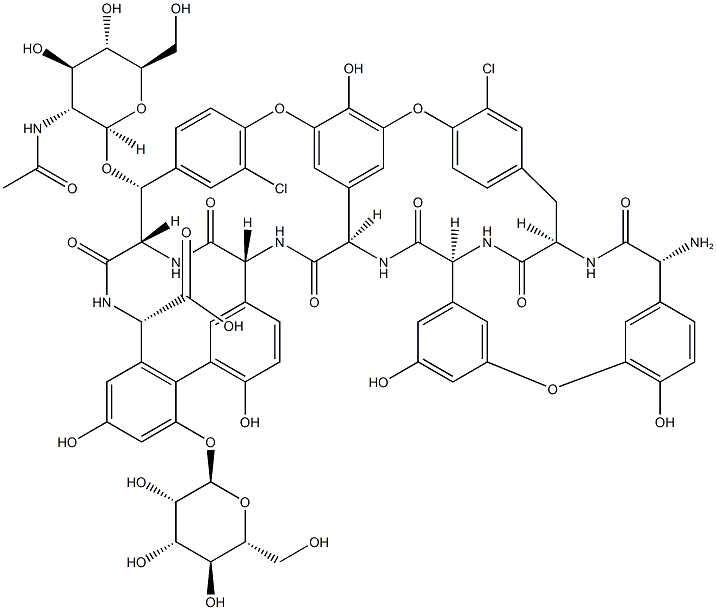Uses
Teicoplanin A3-1 is an antibiotic against Gram positive bacteria.
Uses
Teicoplanin A3-1 is a minor polar analogue of a family of lipoglycopeptides produced by Actinoplanes teichomyceticus. Teicoplanins possess potent broad spectrum antibiotic activity against Gram positive bacteria, including MRSA and E. faecalis. Teicoplanin A3-1 is the common degradation product of teicoplanins A2-1 to 5, resulting from cleavage of the lipoaminoglycoside substituents.
Definition
ChEBI: A glycopeptide consisting of a macropolycyclic heptapeptide in which a phenolic hydroxy group has been converted to its alpha-D-mannoside while a secondary alcohol group has been converted to the corresponding 2-acetamido-
-deoxy-beta-D-glucoside.
Biological Activity
teicoplanin a3-1, also known as antibiotic l 17054, is a glycopeptide antibiotic derived from actinoplanes teichomyceticus and produces a potent broad spectrum antibiotic activity against gram-positive bacteria.teicoplanin a3-1 is a common degradation product of teicoplanins a2-1 to 5, which results from cleavage of the lipoaminoglycoside substituents. teicoplanins are glycopeptide antibiotics produced by a. teichomyceticus which are effective against gram-positive bacteria, including methicillin-resistant staphylococcus aureus (mrsa) and e. faecalis. as an antibiotic complex, teicoplanin consists of five closely related factors, t-a2-1, 2, 3, 4 and 5 and a more polar factor, t-a3-1. additionally, as a glycopeptide antibiotic belonging to the same family as vancomycin, teicoplanin blocks cell wall synthesis in bacillus subtilis, which is accompanied by an intracellular accumulation of udp-n-acetylmuramyl-pentapetide [1]. due to the greater antibacterial activity of teicoplanin than other agents, it has been thoroughly studied as a β-1actamase-resistant agent for the treatment of human infections caused by streptococci and staphylococci, including enterococci [2].
References
[1]. somma, s., gastaldo, l., & corti, a. teicoplanin, a new antibiotic from actinoplanes teichomyceticus nov. sp. antimicrobial agents and chemotherapy. 1984; 26(6): 917-923.
[2]. traina, g., & bonati, m. pharmacokinetics of teicoplanin in man after intravenous administration. journal of pharmacokinetics and biopharmaceutics. 1984;12(2): 119-128.
